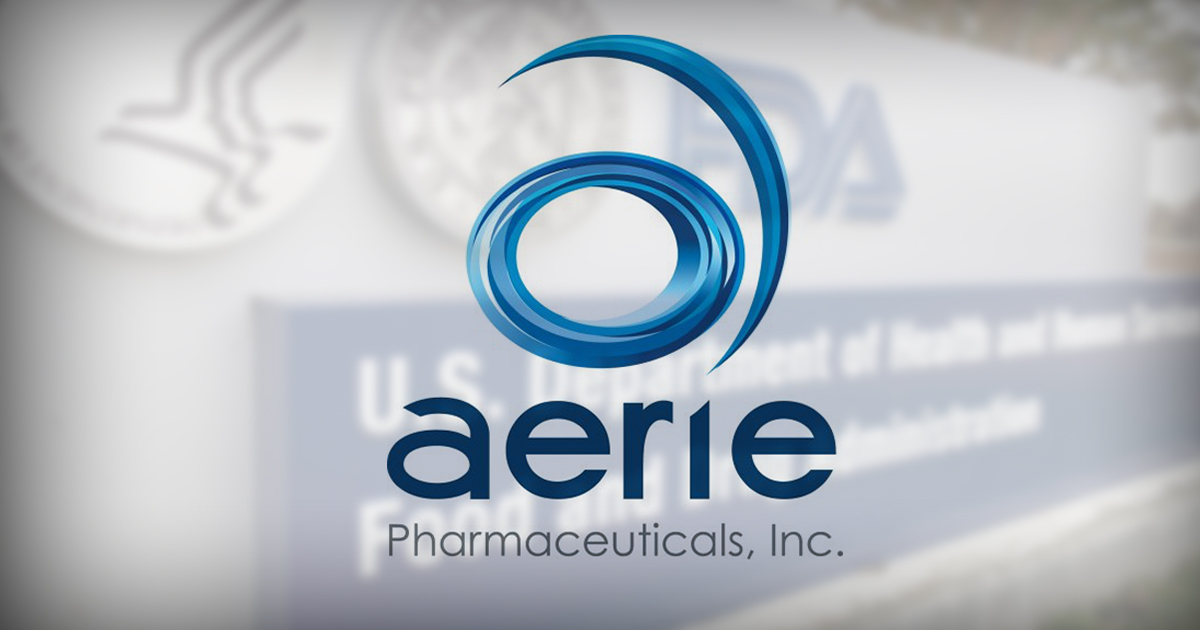With Early Rhopressa ‘Present,’ Aerie Plots Next Steps

Aerie Pharmaceuticals’ CEO and chairman Vicente Anido Jr., PhD, says the company got “an early Christmas present” when the Food and Drug Administration approved Rhopressa – a once-daily eye drop for lowering elevated intraocular pressure (IOP) in patients with open-angle glaucoma or ocular hypertension – well in advance of the scheduled decision date in February.
Now Aerie is moving forward with building a US sales force. Plans include adding 14 district managers across the country, four regional sales directors, and 100 sales representatives. Dr. Anido says the company has hired people from some of the major ophthalmic pharmaceutical companies over the past few months. This will be “all the firepower we need,” he states, as doctors are already well aware of what Rhopressa (netarsudil ophthalmic solution 0.02%) does as well as Aerie’s other main product, Roclatan (netarsudil 0.02%/latanoprost 0.005%), which is about a year behind Rhopressa in development. Rhopressa is an adjunctive therapy, given once a day along with a prostaglandin.
The company is looking forward to showcasing Rhopressa beginning with the Hawaiian Eye meeting this week in Maui and then at the American Glaucoma Society annual meeting March 1–4 in New York.
Dr. Anido also notes the company has been building a managed-care group that’s working with commercial payers to get Rhopressa onto as many formularies as possible by the time the sales force hits the field. However, he explains, because of Medicare rules, Rhopressa can’t get onto Medicare formularies until January 2019.
Looking Over There
Aerie is also focusing on Europe and Japan. Dr. Anido says the number of clinical trials in Europe has helped Aerie establish a presence there. He explains that the expectation is that Roclatan will be better received in Europe than Rhopressa because clinicians there are accustomed to combination drugs. Rhopressa will be used as a gateway into Europe and to build the foundation for Roclatan. In September 2017, Aerie launched the Mercury 3 Phase III trial of Roclatan in Europe, with a desired time frame for approval in 2019 or 2020.
In Japan, Aerie met with the Pharmaceuticals and Medical Devices Agency (PMDA) and obtained approval for Phase I and II trials in Japanese and Japanese-American patients in the US. Those trials are ongoing and the company expects to report top-line data toward the end of this year. If the trials are successful, Aerie will begin developing clinical trials in Japan.
Dr. Anido points out that while IOPs in populations in Europe and the US are very similar, in Japan they average about 3 mm of mercury (Hg) lower. This means that a drug like Rhopressa, which works better at lower IOP, could end up being a more desirable agent in the Japanese population.
Unique Mechanism of Action
The Rhopressa journey began in 2005 when David Epstein, MD, who was then the chair of ophthalmology at Duke, had the idea to come up with a once-a-day product with a completely new mechanism of action that works on the trabecular meshwork, which serves as the primary drain of the eye.
Rhopressa is believed to work by enabling the outflow of aqueous humor through the trabecular meshwork. With the addition of latanoprost, Roclatan does the equivalent of a full-court press on IOP, not only by working on the trabecular meshwork, but also by increasing outflow through the uveoscleral pathway, reducing fluid production and reducing episcleral venous pressure.
As an example of the results of this synergistic effect, Dr. Anido explains that one metric doctors use is the percent of patients who meet a certain IOP. If a group of patients has IOPs in the mid-20s mm Hg, they’ll look to see how many get to 16 mm Hg or below. Dr. Anido points out that in Phase III trials of Roclatan, almost two-thirds of patients reached IOPs of 16 mm Hg and below, whereas only about one-third of patients reached that target with latanoprost alone. Also, almost one-third of the patients in the Roclatan trials got to 14 mm Hg and lower, many down to single digits. Says Dr. Anido, “To be able to get patients that low with drugs is just not something we’ve seen before.”
And Even Further Down the Road
In the longer term, Aerie is exploring age-related macular degeneration (AMD) as a potential treatment target for its AR-13154 candidate. The company’s product development is built on novel chemical structures all based on rho-kinase inhibition. Founder and CSO Casey Kopczynski, PhD, took those molecules and started testing them against a number of different diseases in ophthalmology to see whether they could work somewhere other than glaucoma. A particular grouping of these molecules was found to work particularly well in animal models that are somewhat predictive in showing what the drug will do in patients with wet AMD.
The company performed side-by-side tests with Eylea (aflibercept, Regeneron), and found these agents to be a little bit more effective than Eylea alone in a particular model, Dr. Anido says. And when added to Eylea, the agent was shown to improve Eylea’s efficacy.
However, Aerie needed a delivery system to stop these small-molecule agents from clearing so quickly. Last year, Aerie acquired Envisia Therapeutics and its sustained-release PRINT technology, and entered into a research collaboration agreement with DSM that includes an option to license DSM’s bioerodible polymer implant technology. The next step will be preparing an Investigational New Drug application, which, according to Dr. Anido, Aerie hopes to do toward the end of this year or the beginning of 2019, and after that the company wants to get into the clinic. He says preclinical research shows that delivering a steroid for a six-month period is very viable.
And, adds Dr. Anido, Aerie is beginning to look outside of ophthalmology to see where else these rho-kinase inhibitors may be useful.
